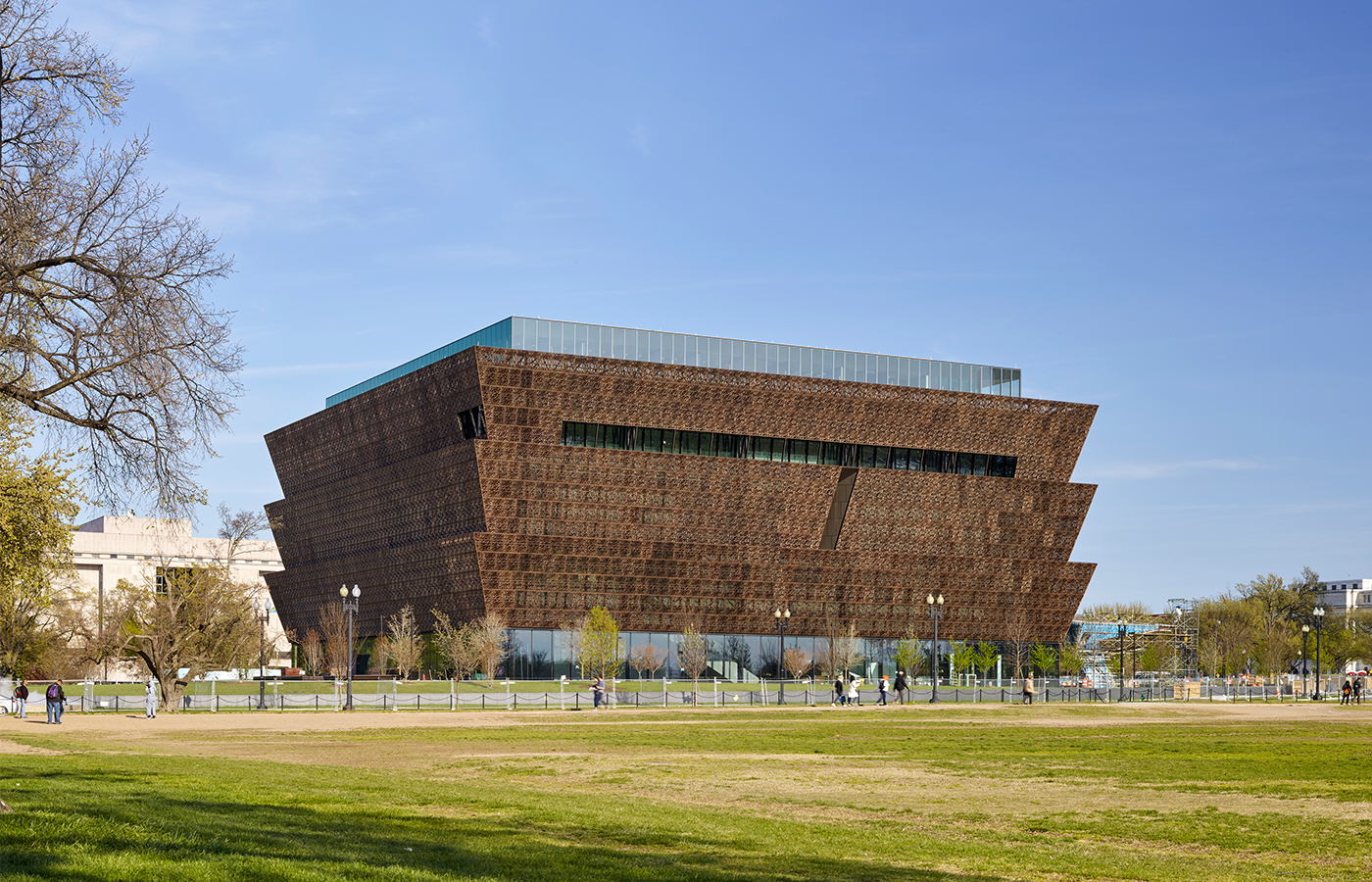Global architecture and design firm Perkins&Will celebrates today the grand opening of the National Museum of African American History and Culture (NMAAHC). The museum, designed by the collaboration known as Freelon Adjaye Bond / SmithGroup JJRfor which Perkins&Will’s Phil Freelon served as lead architecthonors the significant social, economic, and cultural contributions that African Americans have made to this country over the last several centuries.
As an African American, and as the lead architect on this project, to know that this vision has become a reality on the National Mall, right in the heart of our nations capital and within steps of the Washington Monument, is to realize a magnificent accomplishment, says Freelon, managing and design director for Perkins&Wills North Carolina practice. Its difficult to find the right words to express my pridenot just in our contributions to the design of this museum, but also in all that the museum represents, and in all that the museum strives to do.
WATCH: Phil Freelon shares his personal history growing up and becoming a leading architect.
Freelon has been actively involved in the creation of the museum since 2006. At that time, he began collaborating with the late Max Bond, another preeminent African American architect and a principal of the firm Davis Brody Bond, on the building’s initial planning. This collaboration resulted in a 1,200-page master planning and programming document that laid the groundwork for the museum’s design that we see today. In 2008, The Freelon Group and Davis Brody Bond invited Adjaye Associates and SmithGroup/JJR to join their team for the museums international design competition. The then newly-formed Freelon Adjaye Bond / SmithGroup JJR won the competition in 2009, and the site broke ground three years later.

Over the next seven years, The Freelon Groupwhich became part of Perkins&Will in 2014was responsible for leading the entire design team and the projects 28 other consultants to ensure that the design intent and The Smithsonians vision for the museum became a reality.
Its been many long years in the making, and every moment of bringing this museum to life has been a true labor of love, says Zena Howard, senior project manager on the NMAAHC and principal at Perkins&Will, who worked full-time on the project for more than 8 years. As one woman out of the roughly 0.02 percent of female African American architects in this country, and the only black female architect on this project, I feel particularly honored to have had such an integral role in the museums creation. It means so much to me.
The Building Design
The design and construction of the nearly 400,000-square-foot museum, which includes exhibition galleries, an education center, a theater, an auditorium, a cafeteria, a store, and offices, was one of the largest and most complex building projects in the country. With 60 percent of the structure underground, designers and engineers had to create a continuous retaining wall around the perimeter of the siteextending 65 feet down at its maximum heightto secure the buildings foundation in the marshland below Washington, D.C.
The museum is also the most sustainable national museum ever built, and the greenest of all Smithsonian Institution buildings. Caracteriza tais elementos do projeto como a colheita da água da chuva, painéis solares photovoltaic telhado-montados, Daylighting extensivo, e sistemas mecânicos da eficiência elevada. Ele está rastreando certificação LEED Gold.
O distinto exterior de três camadas do edifício é inspirado no caryatid de Yoruban, uma escultura de madeira ocidental Africana tradicional que tenha uma coroa, ou uma Corona, na parte superior. A forma ascendente resultante é tanto uma presença contrastante e complementar entre suas estruturas vizinhas no National Mall. O padrão na Corona de cor de bronze, composto de 3.600 painéis de alumínio fundido pesando um total de 230 toneladas, foi inspirado pelo ferro ornamentado de Charleston, Carolina do Sul; Savannah, Geórgia; e Nova Orleans, Louisianamuch de que foi criado por escravizados e livres Africano americanos. O impacto visual da Corona muda ao longo do dia e até mesmo o ano, aparecendo silencioso e sombrio às vezes, mas brilhante e vibrante quando exposto à luz solar.
A entrada principal dos edifícios apresenta uma varanda dianteira arrebatadora com uma piscina reflectora, acolhendo todos os que se aproximam do National Mall. Os visitantes passam pelo Heritage Hall antes de entrar na Galeria de história no nível mais baixo. Subindo através de rampas através de exposições destacando escravidão e liberdade, a história culmina no 1968 e além da exposição. O Tribunal contemplativo, onde uma cachoeira cilíndrica, juntamente com a luz do dia brilhando para baixo do Oculus acima, define o tom de reflexão e lembrança.
O teatro Oprah Winfrey, localizado em frente ao tribunal contemplativo, acomoda 350 pessoas. Este local é um fórum para intérpretes, artistas, educadores, estudiosos, autores, músicos, cineastas e líderes de opinião para mostrar como a história e a cultura afro-americanas molda e enriquece o país e o mundo.
As exposições focadas na cultura e na Comunidade, na música, e nas artes visuais são situadas nos assoalhos acima da classe.
Tudo sobre o design deste museu foi proposital com a esperança de que os visitantes iriam ver a América de uma perspectiva diferente, através da lente da experiência afro-americana, diz Freelon. Com todos os males sociais que aflitam a nossa nação hoje e estamos vivendo através de algumas vezes muito desafiador é minha esperança de que as pessoas que vêm aqui vai deixar mudado positivamente, com uma mente aberta, coração, e vontade de se reunir para encontrar soluções.
Para obter mais informações, entre em contato com [email protected].


